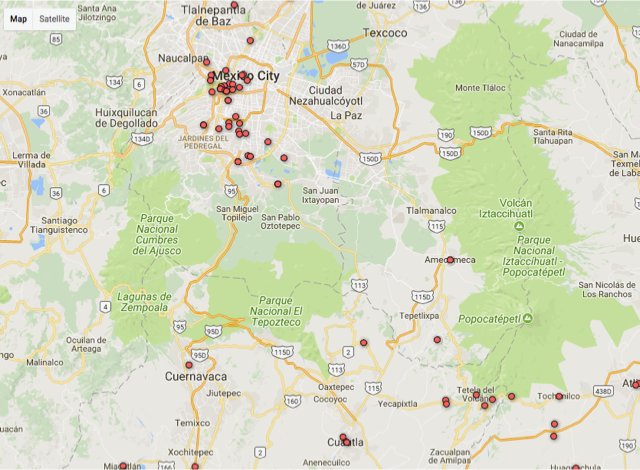On Sept. 19, a magnitude 7.1 earthquake struck Mexico City and the surrounding region, demolishing buildings, killing hundreds, and trapping and injuring many more. More than 3,000 structures were damaged in Mexico City alone, according to news reports.
The disaster galvanized Mexican students in the MIT Department of Urban Studies and Planning (DUSP) to construct a crowdsourcing platform designed to link those in need of help with volunteers best positioned to assist with specific needs.
Using the online platform, Manos a la Obra, affected individuals and volunteers can post requests and offers for various types of aid, such as medical services, shelter, food, and water, as well as their contact information so that they can communicate directly. The information collected by the platform is geolocated and displayed on a map in real-time to allow organizations and individuals the ability to tailor aid responses to each request.
The platform’s capacity to disseminate information quickly and target aid efforts efficiently has led to its adoption by volunteers, civil organizations, and other networks in Mexico. In the first 48 hours after the earthquake, the platform collected over 1,000 aid offers and requests throughout the affected region of Central Mexico and beyond. Aid offers continue to be rapidly organized and publicized, facilitating logistics for aid workers on the ground in Mexico City and the affected area.
The group behind the platform includes graduate students Daniel Heriberto Palencia, Akemi Matsumoto, Ricardo Alvarez, and Carlos Sainz Caccia from DUSP and the MIT Senseable City Lab. The team is now concentrating their efforts on linking the site’s information with volunteers, aid distribution centers, and logistic partners on the ground to deploy aid more quickly.
“We encourage those who would like to support victims in and around Mexico City to visit Manos a la Obra and share the platforms with their networks to ensure their help reaches the right people, at the right time,” says the team.
- - - -
Ayuda dirigida y crowdsourced para las víctimas del terremoto mexicano
El 19 de septiembre, un terremoto de magnitud 7,1 golpeó la ciudad de México y la región colindante, demoliendo edificios, matando a más de 250, atrapando e hiriendo a muchos más. Solo en la Cd.de México de 3.000 estructuras fueron dañadas, según informes de prensa.
El desastre galvanizó a estudiantes mexicanos en el Departamento de Estudios Urbanos y Planificación (DUSP) del MIT quienes desarrollaron una plataforma de crowdsourcing diseñada para vincular a aquellos damnificados que necesitan ayuda con voluntarios geográficamente cercanos que ofrecen asistencia específica a sus necesidades.
Usando la plataforma en línea, Manos a la Obra, damnificados y voluntarios pueden publicar solicitudes y ofertas de ayuda de varios tipos, tales como servicios médicos, refugio, comida y agua, así como su información de contacto para que estos puedan comunicarse directamente. La información recogida por la plataforma es geolocalizada y mostrada en un mapa en tiempo real el cual permite a las organizaciones e individuos adaptar las respuestas de ayuda a cada solicitud.
La capacidad de la plataforma para difundir información rápidamente y orientar los esfuerzos de ayuda eficientemente ha llevado a su adopción por voluntarios, organizaciones civiles y otras redes en México. En las primeras 48 horas después del terremoto, la plataforma recolectó más de 1.000 ofertas y solicitudes de ayuda en toda la región afectada del centro del país y más allá. Las ofertas de ayuda continúan organizándose y publicándose rápidamente, facilitando la logística para los trabajadores humanitarios en la Ciudad de México y la zona afectada.
El grupo detrás de la plataforma incluye a los estudiantes de postgrado Daniel Heriberto Palencia, Akemi Matsumoto, Ricardo Alvarez y Carlos Sainz Caccia de DUSP y el MIT Senseable City Lab. El equipo ahora está concentrando sus esfuerzos en vincular la información del sitio con voluntarios, centros de distribución de ayuda y con quienes puedan ofrecer ayuda logística local para desplegar ayuda más rápidamente.
"Pedimos a quienes deseen apoyar a las víctimas en y alrededor de la Ciudad de México a visitar Manos a la Obra y pasar la voz sobre esta herramienta para asegurar que la ayuda llegue a las personas adecuadas, en el momento adecuado," dice el equipo.







